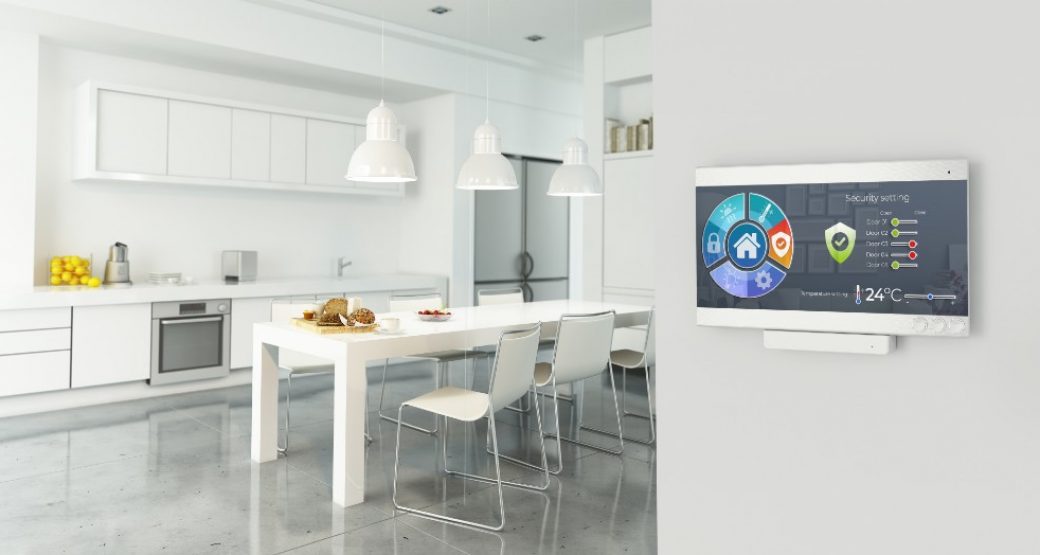Home security systems are no longer marked by huge locks and skyrocketing gates. With time and the advancements in home security technology, both commercial and residential properties are safer than ever.
The present wave of home security technology is replacing home security cameras and other home security systems with newer, state-of-the-art, products. Some of the most advanced home security systems today comprise smart alarm systems, light sensors, smart home automation features, and more. Advanced home security technological developments today provide homeowners with easy access to a wide range of smart hardware and software solutions.
Per Gartner’s research, an average home could remotely connect to approximately 500 things inside the home using smart automation devices. Therefore, if you’re planning to upgrade your home security, you should do it now.
Home Security Advances You Need to Know About
Nowadays, there’s much more to protect your home from burglars and criminals than home security cameras. Even the most basic home security features such as door and window locks have been upgraded to smart door and window locks with sensors; thanks to the advancements in home security technology.
Many home security systems are also leveraging the internet and cloud to manage home security remotely, make home security solutions more reliable and improve their affordability.
Let’s look at some home security advances you must know to enhance your current home security systems!
Body Heat and Motion Detectors
These home security devices pick up body heat and motion and trigger an alarm as soon as they identify either. These detectors can help in:
- Sensing an intruder and alerting the central monitoring station
- Alerting you in the event of a break
- Triggering a doorbell when someone approaches your entrance
- Notifying you when pets/other animals enter your home
The most common types of body heat and motion detectors on the market are:
- Passive infrared (PIR)
- Dual technology
- Microwave (MW)
- Customized, such as contact sensors and pet-immune sensors
Wireless Alarm Systems
Wireless alarm systems are known as the next generation of home security. They come with better protection, reduced installation costs, and lower maintenance. However, many homeowners still prefer wired alarm systems (we’ll discuss why in the next section).
A wireless alarm system comprises:
- Alarms
- Cameras
- Sensors
- Different connectors
All these components are connected to the central control panel using radio signals.
Smart Locks
You are no longer required to hide your keys in the flower pot or under the mat. These days, you can easily find smart locks with Bluetooth- or WiFi-enabled keypads. With these locks, you can lock your doors and windows without walking up to them; all you need is a smartphone or voice assistant.
Facial Recognition Technology
Smart video cameras and doorbells can now use facial recognition technology to identify potential threats.
Carbon Monoxide and Fire Alarms
The advancements in home security technology have also made it possible to detect carbon monoxide (CO), a poisonous gas, and fire, in commercial and residential properties. Almost all home security systems these days comprise CO and fire detectors that trigger an alarm as soon as either is detected.
Why You Need a Wired Alarm System
Both wired and wireless alarm systems come with their own set of advantages and disadvantages. However, most homeowners still prefer wired alarm systems over their wireless counterparts. Moreover, wired alarm systems can be an excellent option for homeowners with pre-wired home security systems.
Wired alarm systems comprise multiple hardware components and require professional installation. Each sensor is connected to the central panel using cables and wires that run around door frames and skirting boards. These systems use telephone lines to operate and communicate.
Let’s look at the advantages of getting a wired alarm system for your home.
- You can hire professionals to install it. Professional installation is more reliable than DIY installation.
- You do not need to worry about the alarm system running low on battery.
- The system does not depend on WiFi. Therefore, even if you’re facing WiFi connectivity issues, they won’t impact your wired alarm system. For instance, with wired alarm systems, there will be no hassles during the next 3G sunset. Some 2G/3G cellular carriers have already planned their next 3G sunset dates during the end of 2021.
Offsite Monitoring Capability for Home Security Systems
With crime rates increasing year over year, and criminals becoming as advanced as home security technology, offsite monitoring capability for home security systems is a must.
With offsite monitoring capability, you have more peace of mind than onsite monitoring. You no longer need to depend on your neighbors to ensure the security of your home. To set up offsite monitoring for your home security system, all you need is a smartphone, tablet, or laptop. Remote or offsite monitoring typically operates round the clock and allows you to monitor your residential property as and when you want.
With offsite monitoring, you can monitor and control multiple home security devices using your smartphone, tablet, or laptop. You can also:
- Control monitored alarm systems
- Manage home automation devices, such as smart lights, smart thermostats, smart door locks, and more
- Receive notifications regarding your home security no matter where you are
- View live feed from your home security cameras
- Make your home security system more interactive
For example, doorbell cameras from DMP can allow you to remotely speak to people at your front door through a mobile device. This top-of-the-line camera enables you to look at video-on-demand with a live peek-in or recorded clips anytime.
Transitioning to Home Automation and Complete Home Security
Transitioning to home automation is another crucial step toward ensuring the security of your home. Using home automation, you can control your home security devices using a mobile device no matter where you are. Research shows that by 2023, the smart home industry automation in US homes will be 53.9%. Also, 3 out of 4 buyers in the US have at least one smart gadget at home.
Home automation systems comprise everything from appliances and lights to sprinklers and thermostats. Each device in the home automation system has a dedicated IP address and can be accessed and monitored remotely.
All smart appliances and devices that can be connected to the internet using WiFi or Ethernet can benefit from home automation. Today’s home automation systems power dedicated appliances and devices in your home with monitoring control and programming. These appliances and devices also comprise a user-friendly app interface that can be accessed via a smartphone, tablet, or laptop.
Let’s look at the advantages of transitioning to home automation.
- You can manage all your appliances and devices from one panel. The convenience aspect plays a key role here. Being able to manage all your technology and home security devices through a single interface is a great technological advancement.
- You can enhance the overall security of your home. Home automation systems can help a great deal in connecting different smart home security devices such as automated door locks, motion detectors, surveillance cameras, and more, throughout your home so that you can control them from a single device. You can receive real-time notifications on your smartphone and monitor your home security system from any corner of the world.
- You can control your smart home devices remotely. Home automation also allows you to remotely manage smart home devices, such as smart lights and thermostats. For instance, if you’re stuck in traffic on a sunny summer day, you can remotely reduce the temperature inside your home so that you enter a cool environment when you reach home. You can even switch off the lights while sitting in your office if you left them on by mistake.
- You can make the most of better energy efficiency. With home automation, you can greatly improve the overall energy efficiency in your home. For instance, smart thermostats can help you effectively adjust your temperature preferences and suggest energy-efficient temperature settings. Smart lights can also be programmed to turn on/off depending on the time of the day.
At ProTech Security, we have a strong history of experience, innovation, and customer service. The ProTech Security Advantage is more than 35 years of service in Northeast Ohio and a strong commitment to providing quality, cost-effective protection for homes, businesses, educational institutions, and government facilities. To see what ProTech Security can do for you, contact us today.




